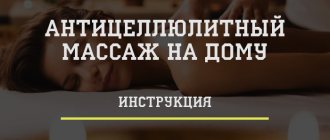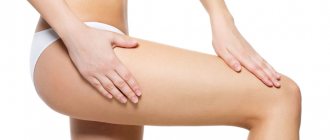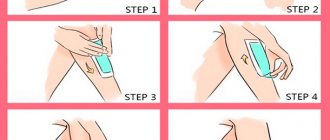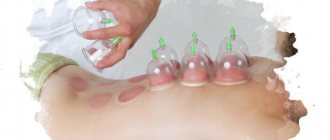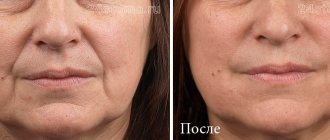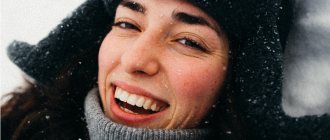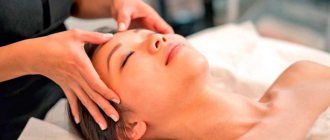One of the most effective anti-cellulite procedures is specialized professional massage. It is significantly safer than most other cosmetic procedures, but is no less effective. The International Center for Health Protection employs the best specialists in Moscow who use proven modern anti-cellulite massage techniques.
massage
massage
- arthrosis;
- muscle and tendon strains;
- soft tissue injuries;
- inflammatory processes.
Since the hip joint is surrounded by many strong muscles, the massage effect must be intense. It is performed on the gluteal region, lower back, but the main manipulations are performed on the thigh area. The impact can be carried out on its anterior, posterior, medial and lateral surface. At the same time, manipulations are performed with the limb and joints: knee, hip.
Not all areas are massaged at once, but only those that require treatment based on a specific disease or traumatic injury. Let's look at the main areas of the thigh that can be massaged.
Front surface
Massage is done through traction, shaking, pressure and jerking movements. The anterior surface of the thigh is affected when the quadriceps or sartorius muscle is damaged. In case of development of bursitis, additional techniques are used: squeezing, kneading.
The massage therapist performs movements, moving from the knee to the thigh. The patient takes a supine position. The doctor is located on the side of him. In this position, he can not only massage the muscles, but also influence the entire limb, stretching it or pressing it in certain places.
Rear surface
It is massaged with a person lying on his stomach. The main massage techniques are tapping, pressure, and traction. Massage is often done if the pathological process affects the fascia and muscles of the gluteal region and hip extensors. Leg extension can be done in a sitting position if necessary.
Lateral surface
Traditional massage techniques are complemented by pressure. Simultaneously with the massage, traction, rocking, flexion of the hip and knee joints, abduction and rotation are used. They are done in case of damage to the fascia lata of the thigh, iliotibial tract syndrome (runner's knee), reflex tension of the corresponding muscle groups as a result of any injury or disease. All manipulations are usually performed with the patient lying on his back.
Medial surface
Massage of the medial zone is performed for reflex pain caused by muscle spasms and synovitis of the hip joint. If the manipulation technique is followed correctly, symptoms can disappear almost instantly immediately after the massage session. During the exposure, the specialist not only rubs and kneads the muscles, but also presses his finger on the ischial tuberosity, develops the knee and hip joints.
Content
- A little theory about cellulite
- The benefits of anti-cellulite massage
- Indications and contraindications for
- Types of massage in the fight against cellulite
- Techniques and techniques for massage on the thighs
- Manual anti-cellulite massage
- Honey anti-cellulite massage
- Anti-cellulite massage with cups
- Basic rules of anti-cellulite massage
- Anti-cellulite thigh massage at home
- Preliminary preparation
- How to do anti-cellulite thigh massage
- Activities after the massage
- Recommendations for thigh massage
- Conclusion
[ads-pc-2][ads-mob-2]
Massage for hip dysplasia
Massage for hip dysplasia
In the first months of a child’s life, conservative treatment of hip dysplasia is possible. Massage is only an auxiliary technique. The main role in the process of restoring the normal anatomical structure of the joint is played by splints, abduction pillows, plaster casts, and traction.
Closed reduction of a dislocated hip is often performed. It is preceded by pre-repositional preparation. It lasts 2-3 weeks. During this time, kinesitherapy, Freik's pillow, physiotherapy, as well as massage of the hip joint and gluteal region are used. The main purpose of this procedure is to relax the adductor muscles.
Massage is also used after the limb has been realigned, followed by its fixation on a splint. This is one of the stages of rehabilitation. The massage is done after paraffin or ozokerite applications, which provide a thermal effect. It's not just the thigh that is massaged. A massage of the back and buttocks is also used to relax the muscles.
A little theory about cellulite
Most women on our planet face the problem of cellulite. “Orange peel” not only spoils the aesthetic appearance of the body, but also has a negative effect on the entire body as a whole.
Cellulite or lymphostasis is an increase in fat in the deep layers of the skin. It is this excess fat that causes swelling, sagging of the epidermis, oxygen starvation of skin cells, as well as various inflammatory processes.
Cellulite can affect a variety of areas of the skin. Most often this is:
- hips;
- buttocks;
- legs;
- stomach.
It appears a little less often on the back and arms.
Stages of cellulite
If you see “orange peel” on your thighs, don’t get depressed. One of the most effective methods in the fight against lymphostasis is considered to be anti-cellulite massage of the thighs and buttocks.
If you have the means, you can contact professional massage therapists who will help you solve this problem.
If for some reason you do not want to contact specialists, then you will have to master the technique of performing an anti-cellulite procedure.
Thigh adductor stretch
Massage is widely used in sports medicine. Very often, athletes suffer from a sprain of the adductor muscle group of the thigh, which leads to dysfunction of the hip joint.
The objectives of massage are as follows:
- Elimination of reflex disorders.
- Restoring the normal pattern of movements.
- Improving trophism and metabolic processes in the hip joint.
- Elimination of muscle spasm, which leads to impaired hip mobility, narrowing of blood vessels, deterioration of microcirculation and pain.
- Restoring normal relationships between muscle groups.
Usually they do not only massage the thigh. Start from the lumbar region. This allows you to eliminate functional blocking of spinal motion segments. Then massage the back and front surfaces of the leg.
A specialist does massage of the hip joints in adults in case of muscle strain as follows:
Side effects
Undesirable consequences from massaging the lower extremities occur if precautions and contraindications are not observed. Such situations arise if massage procedures are resorted to without a doctor’s prescription or if they turn to an uncertified specialist. As a result of careless and unnecessary manipulations, damage to joints and ligaments may occur, as well as complication of an existing disease. For example, as a result of thrombophlebitis, blood clots can break off and travel through blood vessels, threatening to block blood vessels.
Massage for coxarthrosis
Massage is used as part of the conservative treatment of coxarthrosis, a degenerative process of the hip joint. This joint, along with the knee, very often suffers due to physical activity. The cartilage gradually wears away, exposing the subchondral bone. Due to friction, pain increases, and over time the joint becomes deformed and its function deteriorates.
Conservative methods help reduce pain, slow the progression of the disease, and improve the quality of life. A massage alone is not enough. Additionally required:
Massage for coxarthrosis
Massage for coxarthrosis
- taking medications;
- weight loss;
- reducing the load on the problematic limb;
- gymnastics to strengthen the thigh muscles;
- to give up smoking.
Procedures are used to normalize regenerative processes inside the joint. In recent years, cell therapy has been increasingly used.
An important element of treatment is massage of the thigh and lower back. He helps:
- improve blood supply to the joint capsule (articular cartilage receives blood from it);
- relax the muscles, excessive tension of which causes joint stiffness;
- develop muscles that are poorly used when walking to avoid their atrophy.
If a person uses training, then massage helps make them more effective. It develops muscles before exercise and relaxes them after exercise.
However, arthrosis is not a method to cure arthrosis. The positive effect of the procedure on the course of the disease has not been proven. There is no evidence yet that even daily massage can slow down the destruction of articular cartilage or delay the need for endoprosthetics. Most likely, the technique allows you to obtain only short-term positive results. It reduces pain and improves limb function.
Indications and contraindications for
Massage is a therapeutic procedure that must be prescribed by a doctor. But the vast majority of women disagree with this statement, and when they see uneven skin, they decide to get rid of cellulite on their own.
If you really have a noticeable “orange peel”, you want to improve muscle tone and are struggling with excess weight, and you have no contraindications to the procedure, you can safely start a massage.
Direct contraindications to anti-cellulite massage are:
- viral and colds;
- increased body temperature;
- the presence of tumors of any nature;
- diseases of the heart and blood vessels;
- poor blood clotting;
- varicose veins and the presence of vascular networks on the skin;
- exacerbation of any chronic diseases;
- menstruation;
- pregnancy and lactation;
- any kind of skin diseases.
Massage after hip replacement
Severe arthrosis sooner or later ends in complete destruction of the joint, the formation of ankylosis (its immobility). Due to disability and chronic pain, it is necessary to resort to radical surgery: joint replacement.
During the recovery phase, massage can be used. It begins within a few days after surgery. But massage plays a much larger role in the rehabilitation process 3 weeks after surgery. It is continued for 1-1.5 months along with other procedures and gymnastics.
The period from 21 to 60 days of rehabilitation is called the restructuring phase. At this time, the task of the rehabilitation measures being carried out is as follows:
Massage after hip replacement
Massage after hip replacement
- improve the strength qualities of the operated limb;
- increase range of motion in the joint;
- improve blood supply to tissues.
Massage is carried out every day or every other day. It helps improve blood flow to muscles and accelerate their development. Combined with physical therapy, it increases muscle volume and strength, allowing a person to fully realize their physical capabilities after surgery. With massage and gymnastics, ability to work returns much faster.
Massage is also used in the organizing phase. It lasts up to 1 year after installation of the endoprosthesis. By this time, the range of motion in the operated joint is completely restored. But the muscle mass of the limb is still growing.

